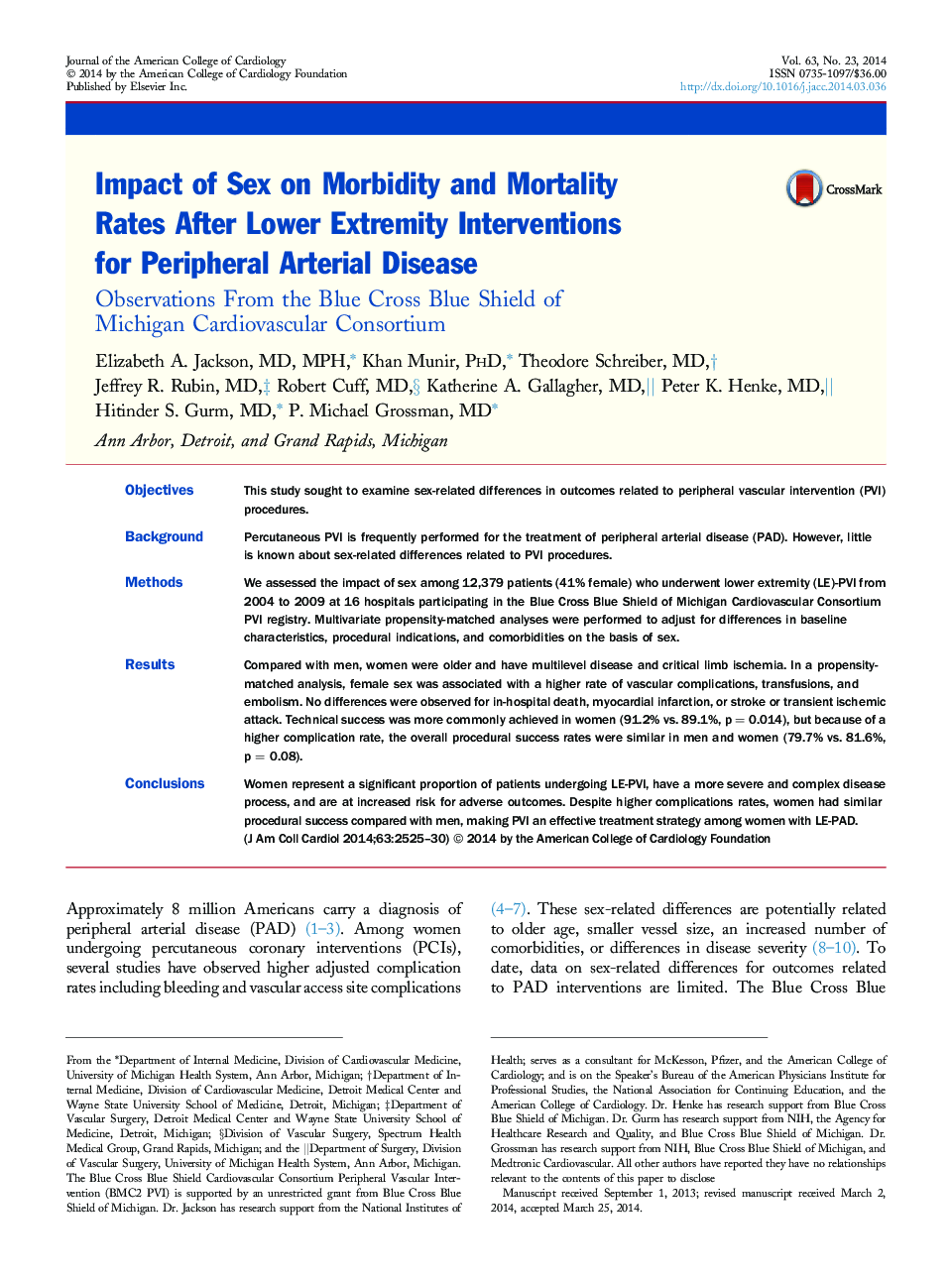| Article ID | Journal | Published Year | Pages | File Type |
|---|---|---|---|---|
| 5983048 | Journal of the American College of Cardiology | 2014 | 6 Pages |
ObjectivesThis study sought to examine sex-related differences in outcomes related to peripheral vascular intervention (PVI) procedures.BackgroundPercutaneous PVI is frequently performed for the treatment of peripheral arterial disease (PAD). However, little is known about sex-related differences related to PVI procedures.MethodsWe assessed the impact of sex among 12,379 patients (41% female) who underwent lower extremity (LE)-PVI from 2004 to 2009 at 16 hospitals participating in the Blue Cross Blue Shield of Michigan Cardiovascular Consortium PVI registry. Multivariate propensity-matched analyses were performed to adjust for differences in baseline characteristics, procedural indications, and comorbidities on the basis of sex.ResultsCompared with men, women were older and have multilevel disease and critical limb ischemia. In a propensity-matched analysis, female sex was associated with a higher rate of vascular complications, transfusions, and embolism. No differences were observed for in-hospital death, myocardial infarction, or stroke or transient ischemic attack. Technical success was more commonly achieved in women (91.2% vs. 89.1%, p = 0.014), but because of a higher complication rate, the overall procedural success rates were similar in men and women (79.7% vs. 81.6%, p = 0.08).ConclusionsWomen represent a significant proportion of patients undergoing LE-PVI, have a more severe and complex disease process, and are at increased risk for adverse outcomes. Despite higher complications rates, women had similar procedural success compared with men, making PVI an effective treatment strategy among women with LE-PAD.
